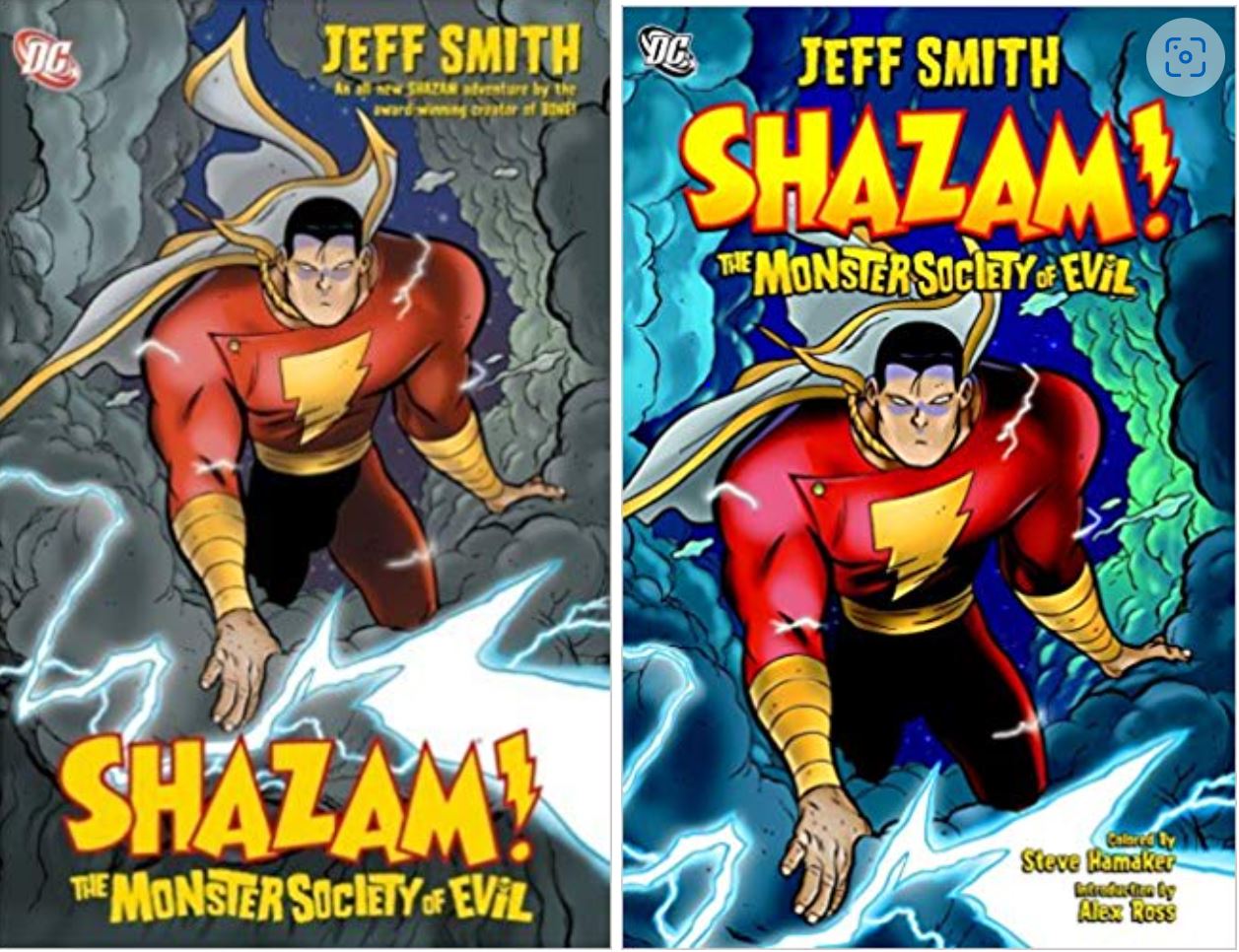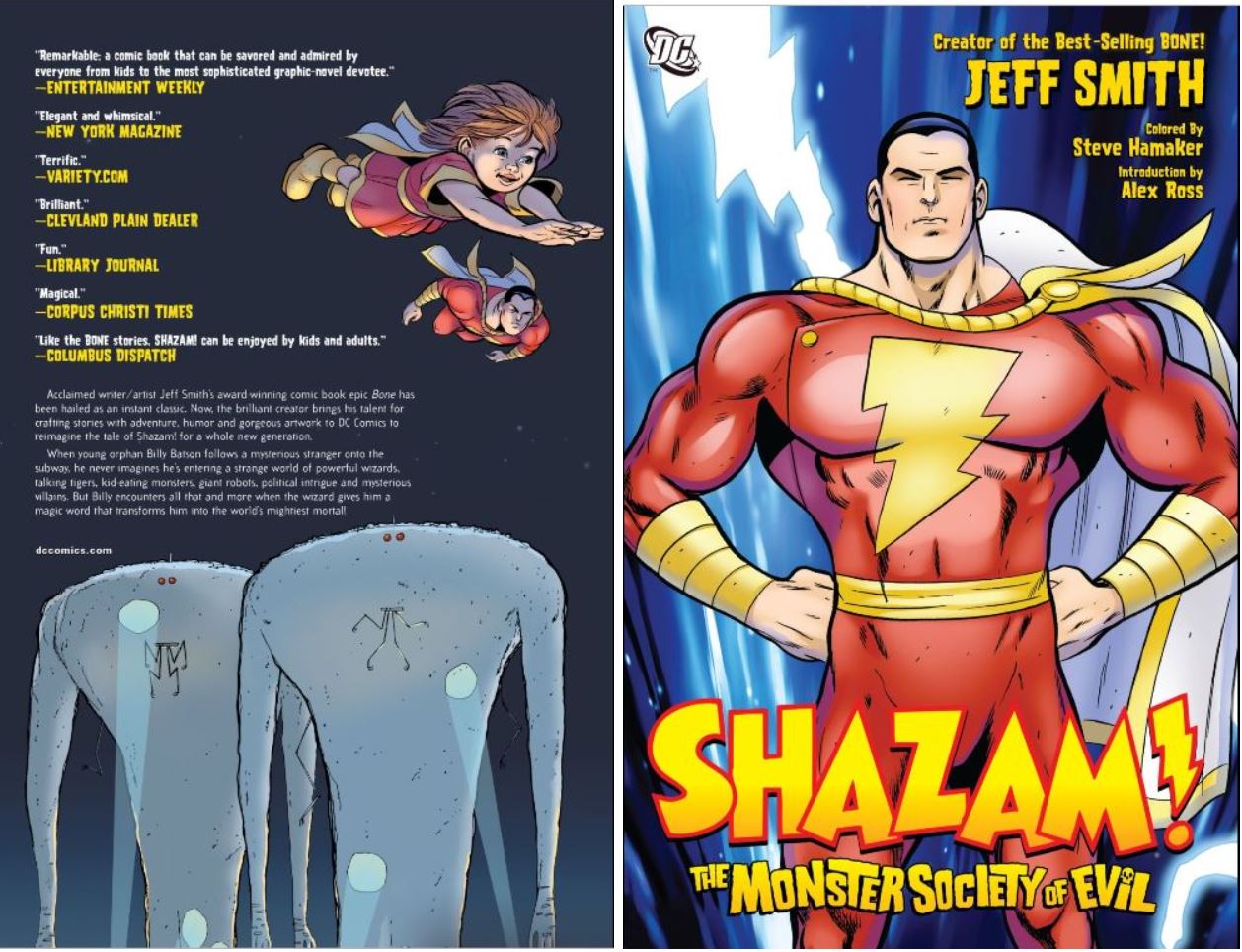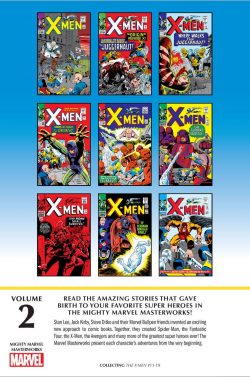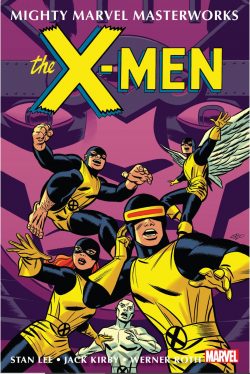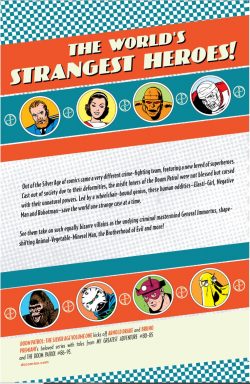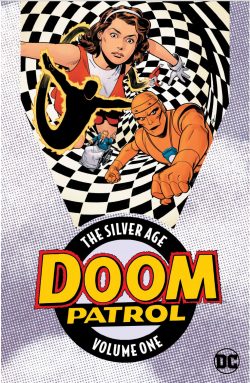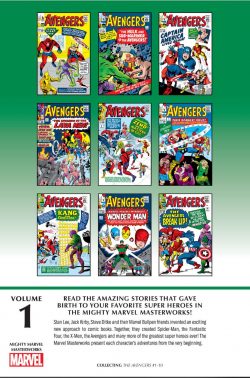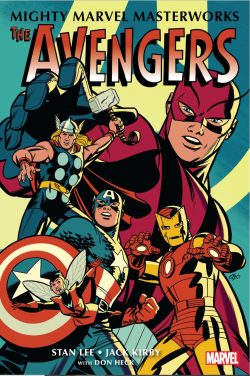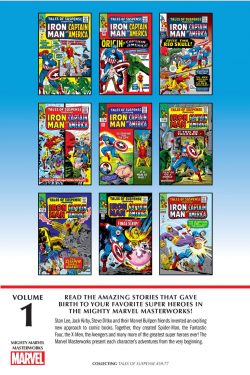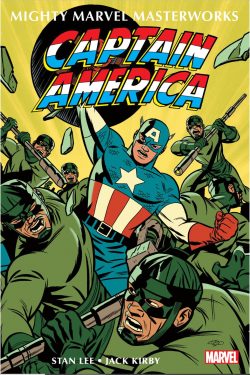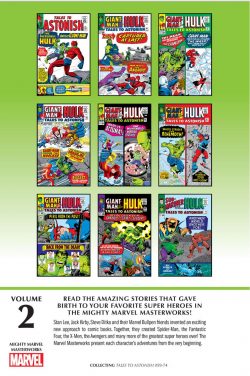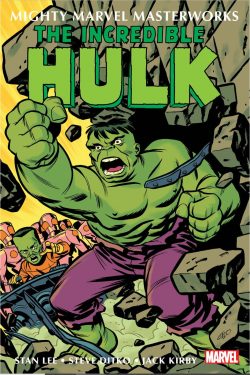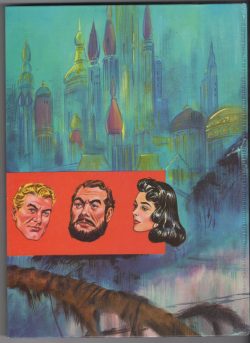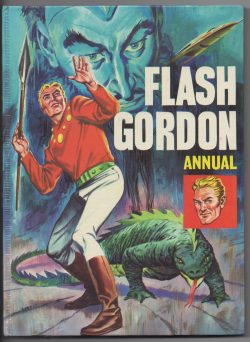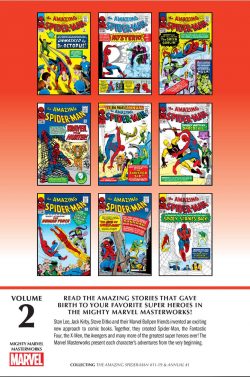
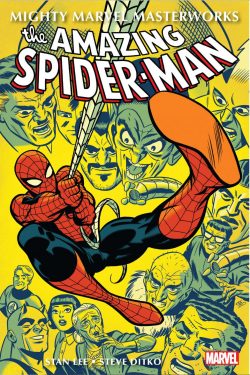
By Stan Lee & Steve Ditko, with Sam Rosen & Art Simek (MARVEL)
ISBN: 978-1-3029-3195-7 (TPB/Digital edition)
As any fule kno, The Amazing Spider-Man celebrated his 60th anniversary in 2022. However, I’m one of those radicals who feel that 1963 was when he was really born, so let’s start the New Year with acknowledgement of that opinion and warning of many more of the same over the next 12 months…
These stories are timeless and have been gathered many times before but this time we’re looking at The Mighty Marvel Masterworks line: designed with economy in mind and newcomers as target audience. These new books are far cheaper, on lower quality paper and smaller, about the dimensions of a paperback book. Your eyesight might be failing and your hands too big and shaky, but at 152 x 227mm, they’re perfect for kids. If you opt for the digital editions, that’s no issue at all.
Marvel is often termed “the House that Jack Built” and King Kirby’s contributions are undeniable and inescapable in the creation of a new kind of comic book storytelling. However, there was another unique visionary toiling at Atlas-Comics-as-was, one whose creativity and philosophy seemed diametrically opposed to the bludgeoning power, vast imaginative scope and clean, gleaming futurism that resulted from Kirby’s ever-expanding search for the external and infinite.
Steve Ditko was quiet and unassuming, diffident to the point of invisibility, but his work was both subtle and striking: innovative and meticulously polished. Always questing for affirming detail, he ever explored the man within. He saw heroism and humour and ultimate evil all contained within the frail but noble confines of humanity. His drawing could be oddly disquieting… and, when he wanted, decidedly creepy.
Crafting extremely well-received monster and mystery tales for and with Stan Lee, Ditko had been rewarded with his own title. Amazing Adventures/Amazing Adult Fantasy featured a subtler brand of yarn than Rampaging Aliens and Furry Underpants Monsters: an ilk which, though individually entertaining, had been slowly losing traction in the world of comics ever since National/DC had successfully reintroduced costumed heroes.
Lee & Kirby had responded with The Fantastic Four and so-ahead-of-its-time Incredible Hulk, but there was no indication of the renaissance ahead when officially just-cancelled Amazing Fantasy featured a brand new and rather eerie adventure character…
This compelling compilation re-presents the rise of the wallcrawler as first seen in Amazing Spider-Man #11-19 and Amazing Spider-Man Annual #1 (spanning cover-dates April – December 1964) and is lettered throughout by unsung superstars Sam Rosen & Art Simek, allowing newcomers and veteran readers to comprehensively relive some of the greatest moments in sequential narrative.
The parable of Peter Parker began when a smart but alienated high schooler was bitten by a radioactive spider on a science trip. Discovering he’d developed arachnid abilities – which he augmented with his own ingenuity and engineering genius – Peter did what any lonely, geeky nerd would when given such a gift… he tried to cash in for girls, fame and money.
Creating a costume to hide his identity in case he made a fool of himself, Parker became a minor celebrity – and a vain, self-important one. To his eternal regret, when a thief fled past him, he didn’t lift a finger to stop the thug, and days later returns discovered that his Uncle Ben has been murdered by the same criminal…
Crazy for vengeance, Parker stalked and captured the assailant who made his beloved Aunt May a widow and killed the only father he had ever known. Since his social irresponsibility led to the death of the man who raised him, the boy swore to always use his powers to help others…
It wasn’t a new story, but the setting was familiar to every kid reading it and the artwork was downright spooky. no gleaming high-tech world of moon-rockets, mammoth monsters and flying cars here… this stuff could happen to anyone…
Amazing Fantasy #15 came out the same month as Tales to Astonish #35 – the first to feature the Astonishing Ant-Man in costume, but it was the last issue of Ditko’s Amazing playground. However, the tragic last-ditch tale struck a chord with the public and by year’s end a new comic book superstar launched in his own title, with Ditko eager to show what he could do with his first returning character since the demise of Charlton’s Captain Atom…
Holding on to the “Amazing” prefix to jog reader’ memories, the Amazing Spider-Man #1 hit newsstands in December sporting a March 1963 cover-date and two complete stories.
Sans frills and extras, the ongoing saga resumes here with Amazing Spider-Man #11. Ditko’s preference for tales of gangersterism drove the stories and his plot for ‘Turning Point’ involves the reappearance of a major supervillain and a growing dependence on soap opera drama, but his solitary, driven hero was always a loner, never far from the streets and small-scale-crime…
In the aftermath of the webspinner crushing a prison riot single handed and defeating the Big Man and The Enforcers, longer plot-strands were introduced as Peter’s potential girlfriend Betty Brant mysteriously vanishes.
Resolved to find her, Parker discovers she’s somehow involved with the multi-armed menace and the Philadelphia mob and goes after her, clashing again with the lethally deranged scientist whilst seeking to expose a long-hidden secret which had haunted Brant for years. It all ended in a spectacularly climactic fight scene on a ship that has still never been beaten for action-choreography…
The wonderment actually intensifies with ‘Unmasked by Dr. Octopus!’, detailing a dark, tragedy-filled tale of extortion and excoriating tension that stretches from Philadelphia to the Bronx Zoo: cannily tempering trenchant melodrama with spectacular clashes in unusual and exotic locations, before culminating in a truly staggering super-powered duel as only the masterful Ditko could orchestrate it.
A new super-foe premiered in Amazing Spider-Man #13 with ‘The Menace of Mysterio!’ as a seemingly eldritch bounty-hunter hired by Daily Bugle publisher J. Jonah Jameson to capture Spider-Man eventually lets slip his own dark criminal agenda, whilst ASM #14 delivers an absolute milestone in Marvel History when a hidden criminal mastermind manipulates a Hollywood studio into making a movie about the wall-crawler.
Even with guest-star opponents The Enforcers and The Incredible Hulk (his last true guest shot before moving into his new residency in Tales to Astonish), ‘The Grotesque Adventure of the Green Goblin’ is most notable for introducing Spider-Man’s most perfidious and flamboyant enemy.
Jungle superman and thrill-junkie ‘Kraven the Hunter!’ makes Spider-Man his intended prey at the behest of embittered Spidey-foe The Chameleon in #15, and – after ignominiously failing to trap his target in the wilds of Central Park – promptly reappears in the first Amazing Spider-Man Annual…
A timeless landmark and still magnificently thrilling Fights ‘n’ Tights tussle, the ‘Sinister Six!’ begins after a team of villains comprising Electro, Kraven, Mysterio, The Sandman, Vulture and Doctor Octopus abduct Aunt May and Betty. Briefly deprived of his powers – lost to a guilt-fuelled panic attack – Peter is forced to confront them without nothing but courage & determination.
A staggeringly enthralling combat clash, with Spider-Man systematically taking down each enemy in a death-defying duels, this influential tale featured cameos (or, more honestly, product placement segments) by every other extant hero of the budding Marvel universe: everyone from The Avengers to The X-Men…
Also included from that colossal comic book are special feature pages on ‘The Secrets of Spider-Man!’; comedic short ‘How Stan Lee and Steve Ditko Create Spider-Man’ and a gallery of pin-up pages starring ‘Spider-Man’s Most Famous Foes!’ (namely the Burglar, Chameleon, Vulture, Terrible Tinkerer, Dr. Octopus, Sandman, Doctor Doom, The Lizard, Living Brain, Electro, The Enforcers, Mysterio, Green Goblin and Kraven the Hunter).
There are also pin-ups of Betty and Jonah, Peer Parker’s House and classmates plus a heroic guest stars page…
Amazing Spider-Man #16 extended that circle of friends and foes as the webslinger battles the Ringmaster and his Circus of Crime: consequently meeting – and inevitably battling – a fellow loner hero in a dazzling and delightful ‘Duel with Daredevil’.
We conclude this outing with an ambitious 3-part saga that began in Amazing Spider-Man #17, wherein the rapidly-maturing hero touches emotional bottom before rising to triumphal victory over all manner of enemies. It begins with ‘The Return of the Green Goblin!’ as the wallcrawler endures renewed print assaults from the Daily Bugle and its obsessed publisher J. Jonah Jameson, just as the enigmatic Green Goblin commences a war of nerves and attrition, using the Enforcers, Sandman and an army of bargain basement thugs to publicly humiliate the Amazing Arachnid and make him look like a fool in front of rival frenemy Johnny Storm – The Human Torch.
To exacerbate matters, Peter’s beloved Aunt May’s health takes a drastic downward turn…
In ‘The End of Spider-Man!’ pressure continues to mount and the troubled champion quits, concentrating exclusively on finding money to pay for his aunt’s treatment and leaving the Torch to handle the Goblin’s crime rampage…
It all explosively concludes in ‘Spidey Strikes Back!’ – featuring a turbulent team-up with the Torch – as a powerful pep talk from May galvanises the disgruntled teen terror and sets him back on his fated path: to the everlasting regret of the Goblin, his gangsters, the Enforcers and Sandman… and Jameson…
This extended tale proved fans were ready for every kind of narrative experiment (single issue or even two stories per issue were still the norm in 1964) and Stan & Steve were more than happy to try anything…
I claimed no extras here, but I lied. Closing the book are some lovely art treats: an unedited view of Ditko’s original cover for ASM #11, the original splash page art for #12 plus page 12and the closing page of #18; every one reason enough to buy this book…
These immortal epics are something no serous fan can be without, and will make an ideal gift for any curious newcomer or nostalgic aficionado.
Happy Unbirthday Spidey and many, many more please…
© 2021 MARVEL.
